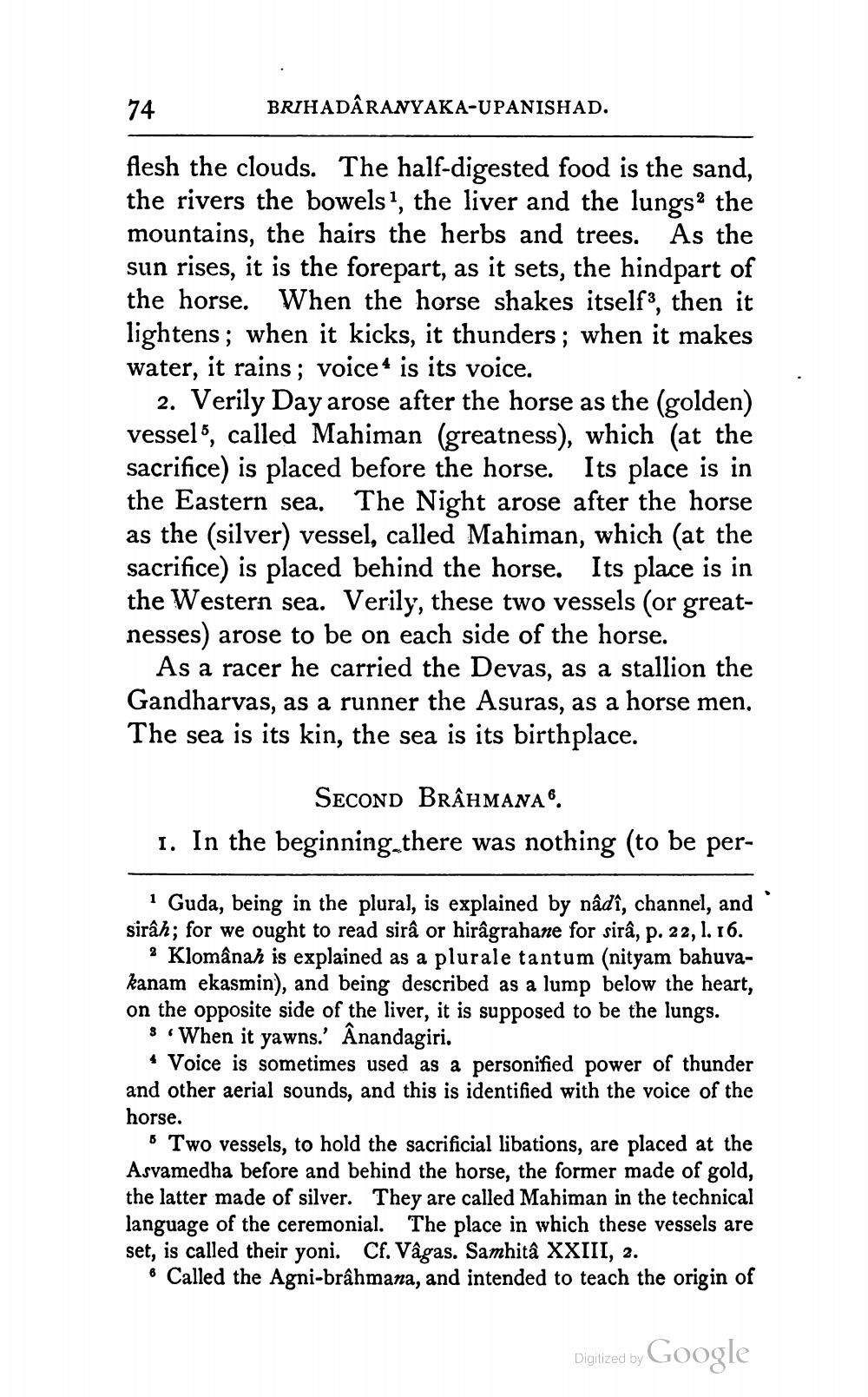________________
BRIHADARANYAKA-UPANISHAD.
74
flesh the clouds. The half-digested food is the sand, the rivers the bowels1, the liver and the lungs the mountains, the hairs the herbs and trees. As the sun rises, it is the forepart, as it sets, the hindpart of the horse. When the horse shakes itself3, then it lightens; when it kicks, it thunders; when it makes water, it rains; voice is its voice.
2. Verily Day arose after the horse as the (golden) vessel, called Mahiman (greatness), which (at the sacrifice) is placed before the horse. Its place is in the Eastern sea. The Night arose after the horse as the (silver) vessel, called Mahiman, which (at the sacrifice) is placed behind the horse. Its place is in the Western sea. Verily, these two vessels (or greatnesses) arose to be on each side of the horse.
As a racer he carried the Devas, as a stallion the Gandharvas, as a runner the Asuras, as a horse men. The sea is its kin, the sea is its birthplace.
SECOND BRAHMANA®.
1. In the beginning there was nothing (to be per
1 Guda, being in the plural, is explained by nâdî, channel, and sirâh; for we ought to read sirâ or hirâgrahane for sirâ, p. 22, 1. 16.
* Klomânah is explained as a plurale tantum (nityam bahuvakanam ekasmin), and being described as a lump below the heart, on the opposite side of the liver, it is supposed to be the lungs. When it yawns.' Ânandagiri.
Voice is sometimes used as a personified power of thunder and other aerial sounds, and this is identified with the voice of the horse.
5 Two vessels, to hold the sacrificial libations, are placed at the Asvamedha before and behind the horse, the former made of gold, the latter made of silver. They are called Mahiman in the technical language of the ceremonial. The place in which these vessels are set, is called their yoni. Cf. Vâgas. Samhitâ XXIII, 2.
• Called the Agni-brâhmana, and intended to teach the origin of
Digitized by
Google




